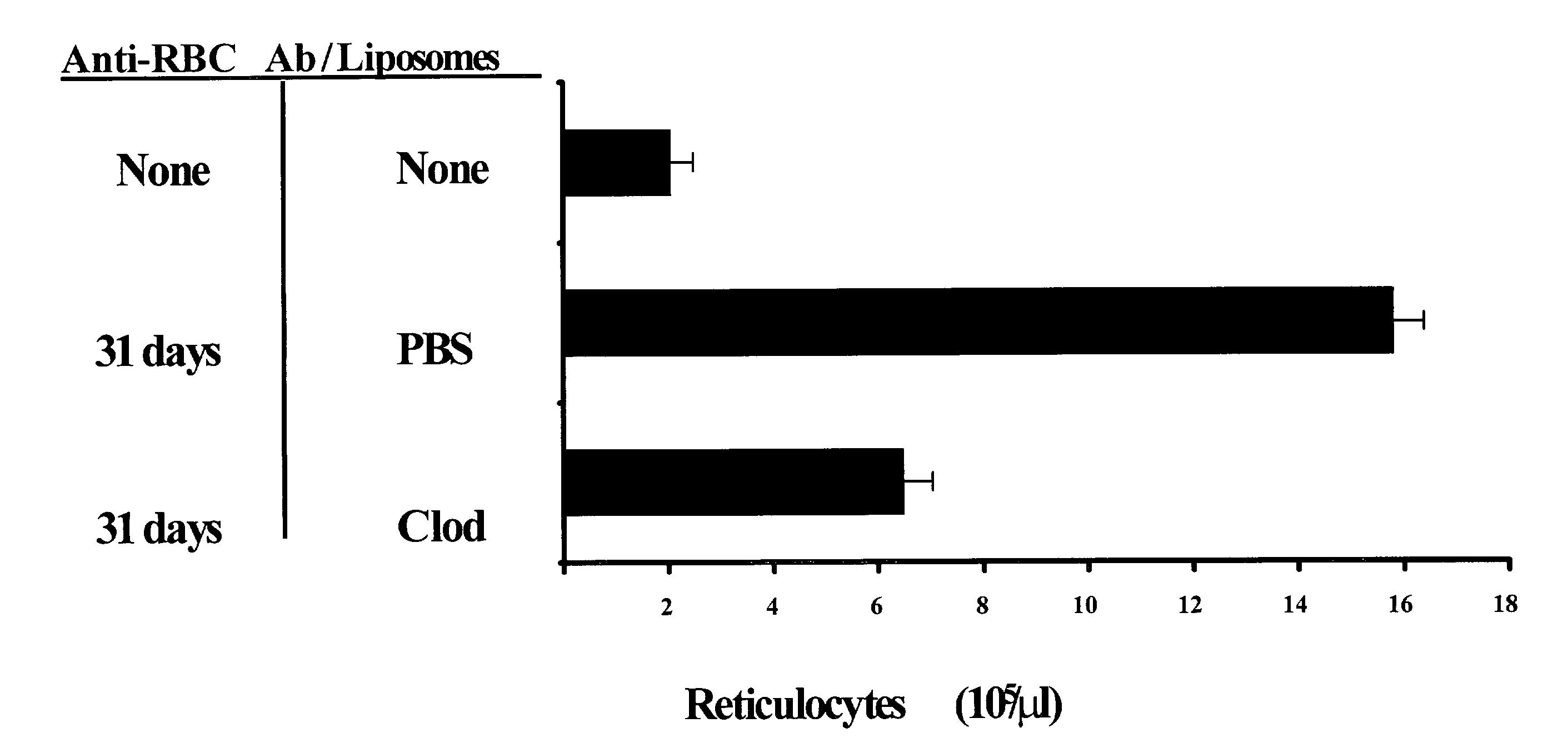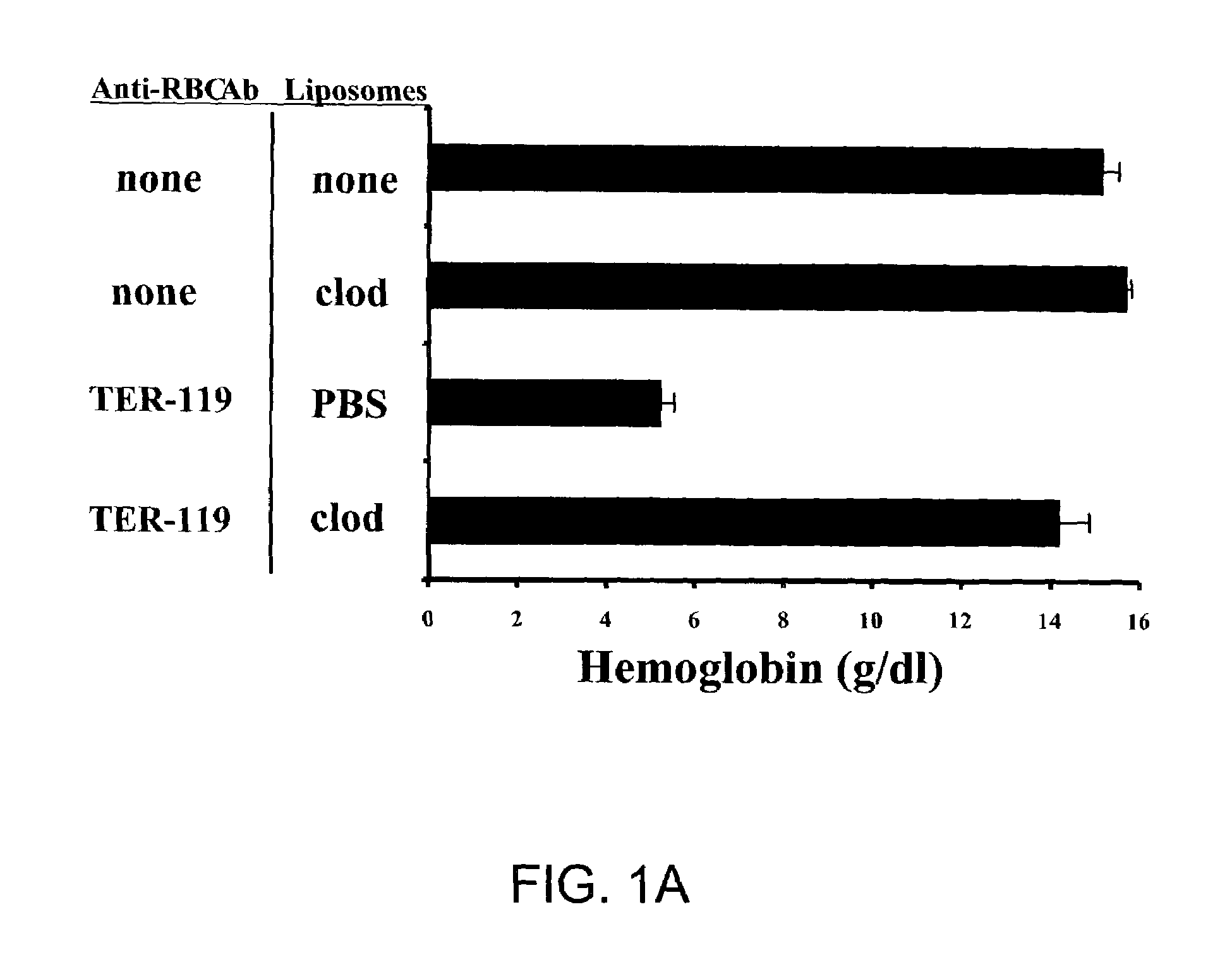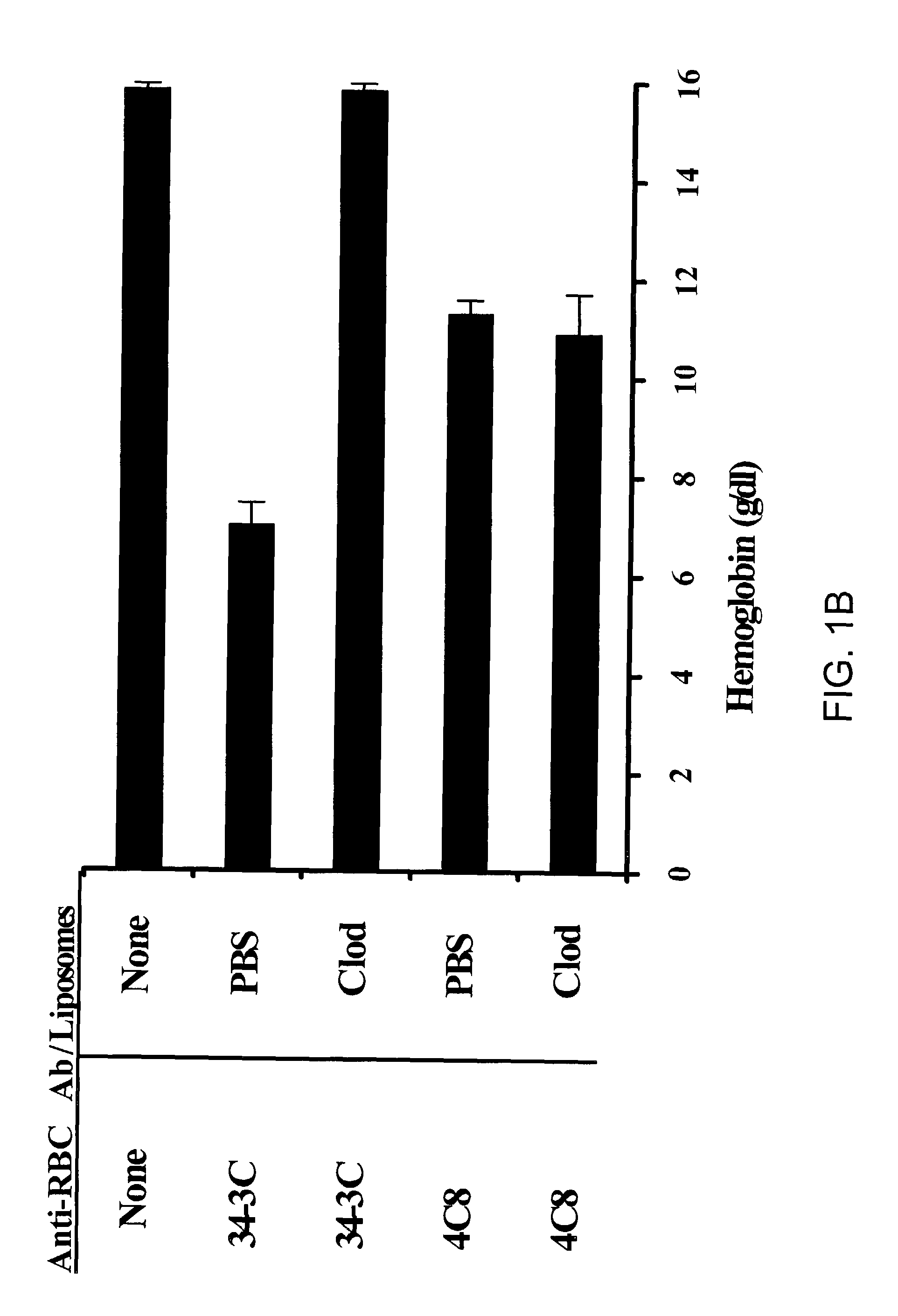Composition and method for treating autoimmune hemolytic anemia
- Summary
- Abstract
- Description
- Claims
- Application Information
AI Technical Summary
Benefits of technology
Problems solved by technology
Method used
Image
Examples
example 1
[0079]The following example demonstrates that liposomal clodronate alleviates antibody-induced anemia.
[0080]To induce anemia, mice were injected with either Ter-119, an IgG2b monoclonal rat anti-mouse red blood cell antibody, or two different monoclonal autoantibodies derived from autoimmune NZB mice: 34-3C (IgG2a) or 4C8 (IgM). Doses and routes of administration for each antibody are described in the Materials and Methods above. Ter-119 recognizes a ubiquitous erythrocyte antigen expressed at highest levels with terminal differentiation (Kina et al., 2000, supra). After a single injection of any of these antibodies, anemia progressed for approximately 48–72 hours in otherwise untreated mice (data not shown).
[0081]Mice pretreated with PBS-containing liposomes develop severe anemia, as documented by a marked decrease in blood hemoglobin values, 36 hours after injection with Ter-119 (FIG. 1). This anemia was identical to antibody-challenged animals which received no pretreatment (data...
example 2
[0084]The following example demonstrates that liposomal clodronate alleviates antibody-induced anemia when administered chronically.
[0085]In order to assess whether liposomal clodronate could be a useful reagent in a more chronic setting, the following experiment was performed. Increasing doses of 34-3C were administered to A / J mice over a 31 day period. The weekly antibody doses were as follows: week one=70 μg; week two=105 μg; week three=14 μg; week four=175 μg; week five 105 μg (half week only). The weekly dose was split into two i.p. injections administered every three of four days. At the same time that the antibody injections were started, weekly liposome treatments were begun. Mice were given injections of either PBS or clodronate liposomes, once per week, for a total of 5 injections. At the end of a month, animals were bled to assess hemoglobin (FIG. 2A) and reticulocyte counts (FIG. 2B). Because their IgG allotype matches that of 34-3C, A / J mice were chosen for this experim...
example 3
[0087]The following example demonstrates that liposomal clodronate rapidly prevents the clearance of opsonized RBC's.
[0088]To investigate further how liposomal clodronate inhibited the development of anemia, RBC's were labeled with the fluorescent dye, CFSE, and opsonized in vitro with anti-RBC antibody (Ter-119). These RBC's (109) were then injected into mice which had been treated with either PBS or clodronate-containing liposomes 36 hours previously. Control mice received an identical number of dye-labeled, but not opsonized RBC's. After allowing 1 hour for the RBC's to equilibrate in the peripheral circulation, mice were bled at various time points. Clearance of labeled RBC's from peripheral circulation was assessed by flow cytometry of blood specimens obtained at the indicated times (FIG. 3A). Data are expressed as a percent of circulating RBC's which are CFSE+(+ / −standard error). The RBC's which were opsonized in vitro with antibody were found to be rapidly cleared from the ci...
PUM
| Property | Measurement | Unit |
|---|---|---|
| Fraction | aaaaa | aaaaa |
| Fraction | aaaaa | aaaaa |
| Time | aaaaa | aaaaa |
Abstract
Description
Claims
Application Information
 Login to View More
Login to View More - R&D
- Intellectual Property
- Life Sciences
- Materials
- Tech Scout
- Unparalleled Data Quality
- Higher Quality Content
- 60% Fewer Hallucinations
Browse by: Latest US Patents, China's latest patents, Technical Efficacy Thesaurus, Application Domain, Technology Topic, Popular Technical Reports.
© 2025 PatSnap. All rights reserved.Legal|Privacy policy|Modern Slavery Act Transparency Statement|Sitemap|About US| Contact US: help@patsnap.com



